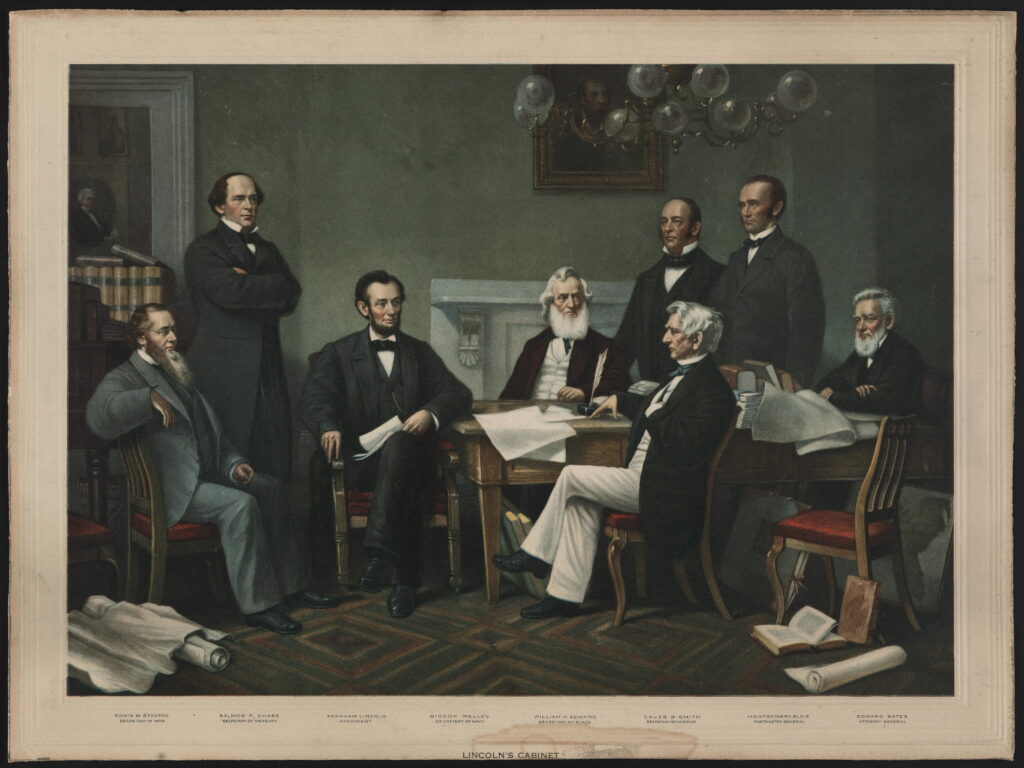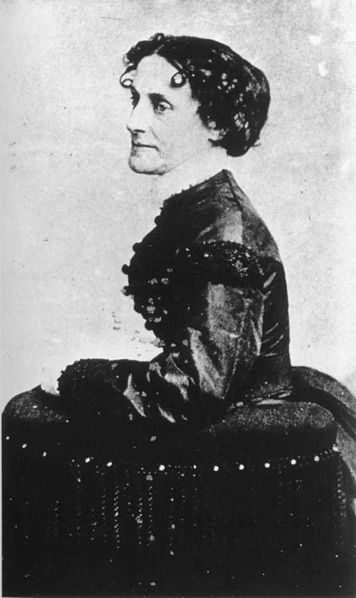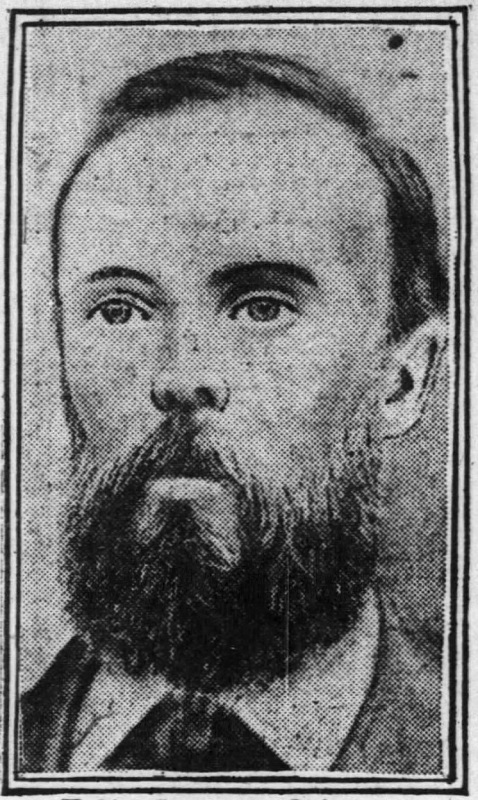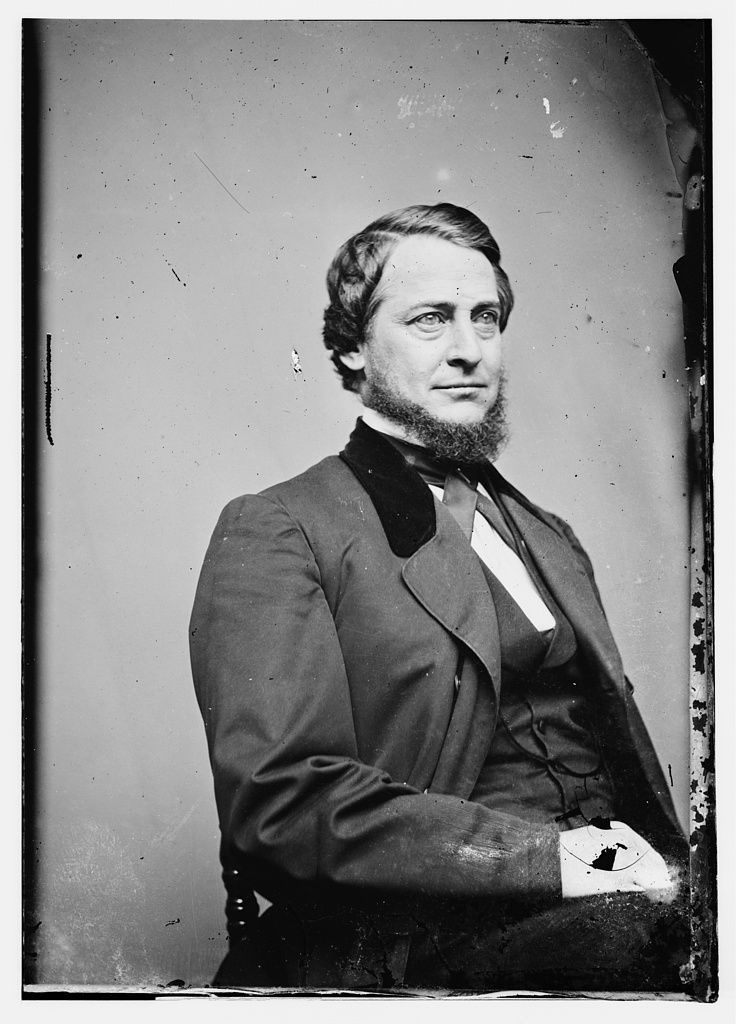The 1864 American Insurrection That Wasn’t: The Northwest Conspiracy and the Chicago Convention
Emerging Civil War welcomes guest author Stephen Romaine.
By 1864, with Civil War casualties mounting and no end in sight, growing numbers of northerners wanted a peace settlement. Abraham Lincoln’s reelection was questionable. He was considered a divisive president, loathed by many on both sides of the Mason-Dixon Line.
Lincoln and Secretary of War Edwin Stanton had received a series of letters from Indiana Governor Oliver Morton and Gen. Henry Carrington, responsible for preserving peace in the Hoosier State, requesting help from the War Department. They claimed Indiana “was honey-combed with secret societies” plotting government defiance.[1] Most of these groups had melded into one paramilitary organization, the Sons of Liberty. It was estimated that there were up to 300,000 members.[2]

The Lincoln administration ignored these requests. Focus was on the battlefield. Lincoln also received blame after Gen. Ambrose Burnside held a military trial and banished anti-war Copperhead leader Clement L. Vallandigham. Many believed this was an excessive “invasion of liberties.”[3] The president wanted to avoid providing fodder for critics, especially in an election year.
In early January 1864, Maj. Gen. Samuel P. Heintzelman assumed command of the Northern Department, which included Ohio, Indiana, Illinois, and Michigan. He was immediately summoned to meet with Stanton and Union General-in-Chief Henry Halleck. Heintzelman noted that both men were aware of a threat of escaped Rebel soldiers in Canada targeting his newly assigned department.[4]

Intelligence for this threat came from Jefferson Davis himself. In 1863, Elizabeth Van Lew placed an agent, Mary Bowser, in the Confederate White House assuming the role of enslaved housemaid.[5] All of the Van Lew-inherited slaves, including Mary, were secretly freed after Elizabeth’s father died. Elizabeth had previously taught Mary to read and write, sending her north for additional education.
Jefferson Davis, suffering from recurring bouts of malaria, often worked from home, sometimes for several weeks at a time.[6] He used his home office for conferences and private meetings. The idea of an enslaved housemaid pilfering information passed to the enemy must have been incomprehensible. By late 1863 Elizabeth Van Lew was exchanging secret messages with Union Gen. Benjamin Butler.[7]

A two-prong counter-insurgency campaign was devised. Stanton’s War Department would fund a regional intelligence operation. By May 1864, a former Union soldier, Felix Stidger, was hired “for extra hazardous duty.” As a double agent, Stidger’s mission was to befriend an Indiana Sons of Liberty officer, William A. Bowles.[8] With Bowles’s sponsorship, Stidger exceeded all expectations, even becoming secretary of a Kentucky chapter.
In the early days of the administration, Secretary of State William H. Seward convinced Lincoln to place intelligence gatherers instead of political appointees in consulate offices. David Thurston, a “troubleshooter” from the Montreal consulate, was already reporting to Seward on activities of “disloyal Americans” in Toronto.[9] In May 1864, his duties expanded after Toronto became a U.S. consulate. Detectives frequented the Queens Hotel where Rebel soldiers congregated. Movements of suspected agitators at the nearby train station was monitored.
The Confederate-sponsored clandestine plan called for Rebel soldiers from Canada to provide leadership and logistical support for Sons of Liberty operatives across Indiana, Illinois, Ohio, and Kentucky. Union arsenals and Great Lakes gunboats would be seized. Federal prisons would be raided, liberating additional Rebel soldiers to bolster ranks and expand the rebellion. Confederate cavalry would raid Kentucky.[10] Coordination was essential as the August 1864 Democratic Convention convened in Chicago.
Clement Vallandigham would try to speak at the convention, slipping back into the North. He and other conspirators assumed he would be arrested. With Vallandigham willing to play martyr for the cause, his arrest would become the trigger for staging the uprising, turning more northerners against “Lincoln’s War.”[11]
Unaware a detective was following, a disguised Vallandigham sailed from Windsor, Ontario, to Detroit in June 1864. Lincoln wrote a letter to the governor of Ohio to jail Vallandigham. Seward most likely advised against this as the letter was never sent.[12]
Vallandigham soon realized he would not be arrested. The insurgency date kept changing. One month prior, Union soldiers armed with information from Felix Stidger raided the Indianapolis office of Harrison Dodd, national leader for the Sons of Liberty. Rebellion plans were printed in local newspapers, and arrests were made. Shipments of weapons and ammunition were seized. What became known as the “Northwest Conspiracy” was completely shut down.[13]
With the terrorist plot exposed before the convention, some peace-leaning delegates likely had second thoughts. Vallandigham did speak, reportedly to a mixed reaction that ended any hope of winning the nomination. He did, however, draft the accepted party platform arguing for immediate cessation of hostilities “after four years of failure to restore the Union by the experiment of war.”[14]

Despite Vallandigham’s peace manifesto, former Union army commander George B. McClellan, a war Democrat fired by Lincoln, was selected to run against the president. The New York Times criticized Vallandigham and his cronies in a post-convention assessment: “Professing to be for peace, you threaten us with a new rebellion.”[15]
It is generally assumed an early warning from Canada helped suppress the Northwest Conspiracy. Additional evidence suggests a Richmond Spy Ring led by Elizabeth Van Lew was the initial source.
In late 1863, Jefferson Davis and his trusted advisers, Secretary of State Judah Benjamin and War Secretary James Seddon, began meeting secretly with a former scout for Gen. John Hunt Morgan’s cavalry raiders, famous for creating havoc in border states. Captain Thomas H. Hines had recently escaped from a Union prison. From December 1863 through early March 1864, Hines periodically conferenced with the three Confederate leaders.[16]
Before his capture, Hines met with Sons of Liberty regional leader William A. Bowles in 1863. Bowles bragged that he could recruit 10,000 men from local lodges to join a Morgan cavalry raid across Kentucky.[17] Nothing happened as Hines and other Morgan officers were subsequently captured and imprisoned. Hines presented to the Confederate leaders in early 1864 an expanded version of what he discussed with Bowles. No doubt, Bowles’ name came up in those meetings.
The Hines proposal was well received, but Confederate leaders did not act immediately. Reliance on nonmilitary operatives, as well as public reaction if the scheme was divulged, were primary concerns. This clearly departed from what Gen. Robert E. Lee described as “honorable means.” Secrecy was of utmost importance. A former Confederate general with ties to Hines later pointed out, “the kind of men who could plan and execute it are the very men to keep a secret themselves.”[18]
Hines received verbal orders from Davis to proceed on March 14.[19] He did not reach Canada until April. Also in April, Davis met with his former inspector general, Jacob Thompson, who agreed to lead Canadian Secret Services. Thompson did not arrive in Canada until May.

Four days after Hines received orders from Davis, Butler and Stanton exchanged telegraphs regarding moving imprisoned “Morgan officers” captured with Hines to an East Coast penitentiary. Butler indicated that “reprisals were informally notified to me.”[20] Although no action was taken, it is highly plausible Butler’s “informal” source was Van Lew, passing along information from Mary Bowser.
Intelligence from Richmond was likely the primary source of the early warning for the Lincoln administration. Learning that Jefferson Davis and his closest advisers were involved could explain the sea change from President Lincoln’s perspective and the aggressive action taken to thwart the insurrection. His administration began dealing seriously with the Confederate-sanctioned threat before the conspiracy leaders could set up shop in Canada – giving them a huge leg-up, effectively neutralizing the Northwest Conspiracy.
Stephen Romaine is author of Secret Army Behind Enemy Lines. He was the keynote speaker at the Society for Women and the Civil War July 2023 Conference. His topic, “Elizabeth Van Lew, Mary Bowser and the Richmond Underground,” was subsequently published by the Society in their quarterly At Home and in the Fielde-journal.
Endnotes
[1] “Governor Morton and the Sons of Liberty,” The Atlantic, July 1893.
[2] “Sons of Liberty,” Encyclopedia Britannica, 2009,
https://www.britannica.com/topic/Sons-of-Liberty-United-States-history-19th-century
[3] “Another Vallandigham Wail,” Cleveland Morning Leader, June 4, 1863; “Vallandigham and Burnside, The Administration Condemned By Its Own Organs,” New-York Tribune, May 20, 1863).
[4] Stephen E. Towne, Surveillance and Spies in the Civil War, (Athens: Ohio University Press, 2015), Kindle Location 3194.
[5] David D., Ryan, Ed., A Yankee Spy in Richmond: The Civil War Diary of “Crazy Bet” Van Lew (Mechanicsburg: Stackpole Books, 2001), 11.
[6] James M. McPherson, Embattled Rebel Jefferson Davis and The Confederate Civil War (New York: Penguin Books, 2015), 6-7, 112.
[7] Ryan, 51.
[8] Felix Stidger, Treason History of the Order of Sons of Liberty, (Chicago: Felix Stidger, 1903), Kindle Location 389-399.
[9] “Thurston, David,” DCB/DBC Mobile beta University of Toronto, Dictionary of Canadian Biography, Volume XI, 1881-1890, http://www.biographi.ca/en/bio/thurston_david_11E.html
[10] Stidger, Kindle Location 1511-1522.
[11] “Vallandigham’s Return; Vallandigham’s Motive,” The New York Times, June 20, 1864.
[12] John G. Nicolay and John Hay, Abraham Lincoln: A History, (Lex De Leon Publishing, 2020), Kindle Edition Location 37271-2.
[13] Towne, Kindle Location 5738-5755.
[14] Gerhard Peters and John T. Woolley, “1864 Democratic Party Platform,” The American Presidency Project, August 29, 1864, https://www.presidency.ucsb.edu/documents/1864-democratic-party-platform
[15] “How it was Done,” New York Times, October 13, 1864.
[16] James D. Horan, Confederate Agent, A Discovery in History, (Auckland: Pickle Partners Publishing, 2015), 150-153.
[17] Ibid, 68-69.
[18] Ibid, 64-65.
[19] Duane Shultz, The Dahlgren Affair, (New York: WW Norton & Company, 1998), 180.
[20] Butler to Stanton, March 18, 1864, Private and Official Correspondence Benjamin F. Butler, (Norwood, MA: Plimpton Press, 1917), Vol. 3, 551.
Steve, you are an amazing writer! Thank you for sharing. It’s hard to believe that we are now reliving the past. It’s scary to see how our generation will be compared to the civil War. But, here we are! The next 10 in the USA will be in high gear! Get ready for more anger, more protests and more lies! Spreading hate seems to be the norm! Let’s pray that we will not see another insurrection, another assignation and we’ll see peace on earth!
( Not Likely) but I can dream!
This is incomplete because it is entirely biased. In the bibliography above, there is not one southern source.